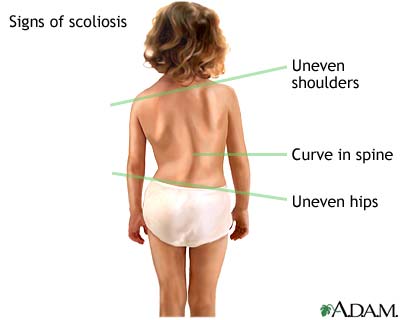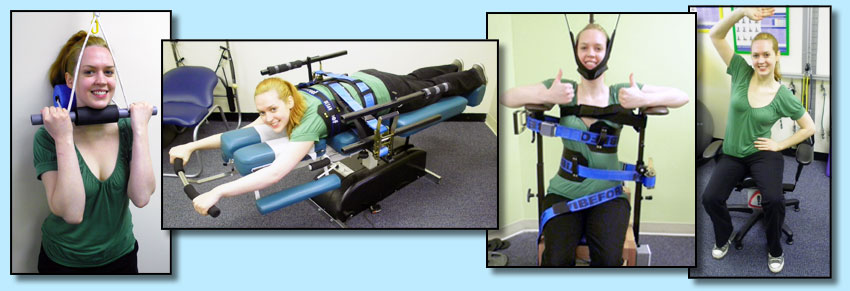Adolescent idiopathic scoliosis (AIS) (sometimes referred to as “teenage scoliosis”) is defined as a lateral curvature of the spine greater than 10 degrees accompanied by vertebral rotation and is present in 2 to 4 percent of children between 10 and 16 years of age. It may start at puberty or during a growth spurt in the teens. Though the cause is unknown (idiopathic) there are genes associated with the condition. Not all adolescents diagnosed with scoliosis have curves that progress and require intervention. The likelihood of curve progression can be estimated by measuring the curve magnitude using the Cobb method.
With curves smaller than 10 degrees scoliosis is present in both girls and boys equally but with curves greater than 30 degrees girls outnumber boys 10 to one. Scoliosis tends to progress more often in girls than in boys.
Symptoms
Teenage scoliosis is most often discovered during a routine physical exam. Pain is not typical in teenage scoliosis and if present may indicate some other condition contributing to the scoliosis, in which further examination may be necessary.
AIS symptoms include:
- Shoulders may not be of the same height (one is higher than the other)
- Head is not centered directly above the pelvis
- Rib cage is not symmetrical; ribs may be at different heights
- A shoulder blade is higher and more prominent (sticks out more) than the other
- One hip is more prominent or higher than the other
- The individual may lean to one side
- One leg may appear shorter than the other
- The waist appears uneven
- Clothes do not fit/hang properly
Diagnosis
A physical examination will indicate that the curve of the spine is more obvious when the child or teen bends forward (Adam’s Forward Bend Test). Often the spine curves to the right in the upper back and to the left in the lower back, causing the right shoulder to be higher than the left. One hip may be more prominent than the other. X-rays taken at various angles while the child or teen is standing will confirm the extent and type of scoliosis.

Traditionally, Adolescent Idiopathic scoliosis was only treated with scoliosis bracing or scoliosis surgery when the curve was deemed as high risk of progression. Smaller less severe curves were only monitored and treated when they became large more severe curves. There is a more proactive approach than the previous “wait and see” methods. It is important to treat scoliosis curves BEFORE they progress rather than AFTER. Not only are there more treatments that address scoliosis early on but they are also non-invasive scoliosis treatments that do not employ the use of scoliosis braces. Instead they use scoliosis exercises consisting of spinal resistance training in conjunction with the principles of autonomic control of the spines alignment. Teenage scoliosis patients are treated with a customized neuromuscular reeducation program that includes treatment on various machines combined with scoliosis exercises. Early-intervention is essential to establish smaller and more stable curves.

